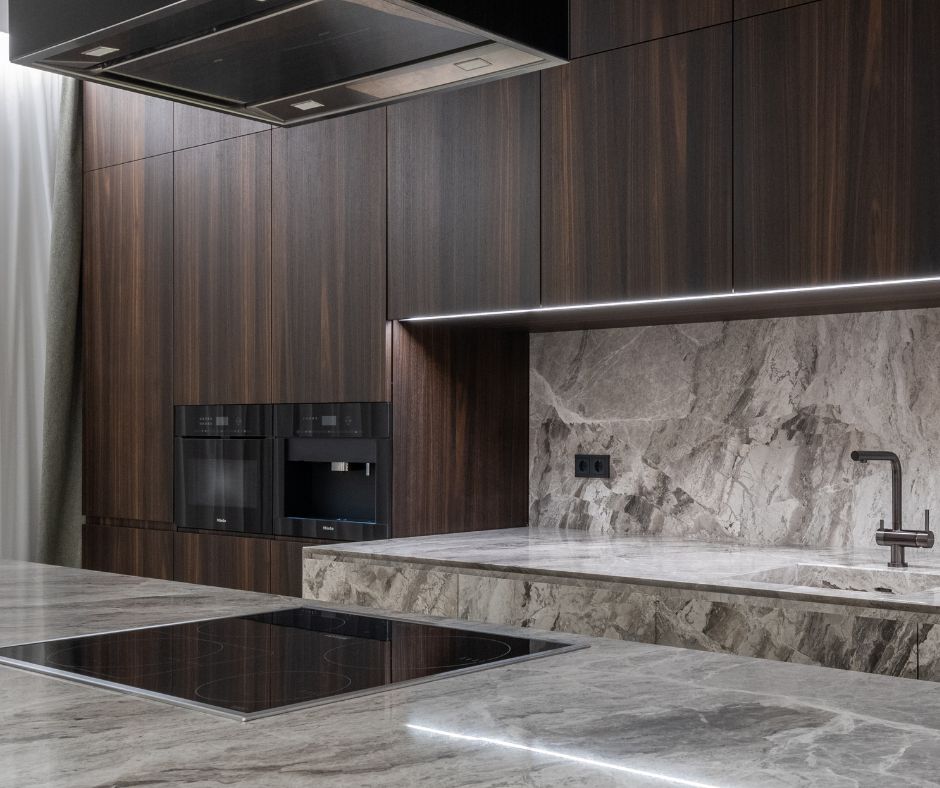Innovative kitchens are not just about style; they promote new culinary traditions that elevate cooking experiences. While induction cooking technology appears to be a cutting-edge advancement, its fascinating origins can be traced back to the early 20th century. Early demonstrations in the 1930s mesmerised audiences with the astounding capability of boiling water using magnetic energy without any visible heat source. Nevertheless, it is only in recent decades, fuelled by remarkable advancements in technology, efficiency, and design, that induction cooktops have firmly established their importance in modern culinary environments.
Today, a growing number of home chefs and culinary aficionados are embracing induction cooking due to its impressive blend of sleek aesthetics, exceptional precision, and unmatched energy efficiency. This innovative cooking method not only accelerates meal preparation but is also transforming the art of home cooking, seamlessly merging the science of heat management with culinary creativity in every dish prepared on its elegant, polished surface. The right induction cooktop can rival the speed of a microwave, allowing you to create delectable family meals in no time!
Discover the Benefits of Precision Cooking for Enhanced Flavour and Nutrition
Unlike conventional gas or electric cookers, induction cooktops directly heat cookware using electromagnetic energy. This innovative method eradicates wasted heat, prevents burnt edges, and offers outstanding control over both low and high temperatures. When you can manage heat so precisely, your ingredients retain more of their natural moisture, flavour, and nutritional integrity. Whether you’re flash-searing proteins, gently simmering sauces, or quickly blanching vegetables, induction cooking enables you to achieve impeccable results effortlessly, steering clear of overcooked meals and nutrient loss.
Stylish and Efficient Induction Cooktops: Optimise Your Kitchen Space and Reduce Stress
In kitchens where every square centimetre counts, induction cooktops shine not only in their performance but also in their visual appeal. Their flat, smooth surfaces integrate seamlessly into your countertop, creating a minimalist aesthetic that enhances the available space for food preparation, plating, or even enjoying casual meals with family and friends.
Unlike traditional gas hobs, which feature bulky grates and protruding burners, induction cooktops sit flush with the countertop. While ceramic stovetops may provide a more streamlined appearance, they often remain dangerously hot long after cooking has finished, posing a safety hazard.
In contrast, induction surfaces cool down swiftly once the cookware is removed. The heat is generated through the magnetic interaction between the cooktop and the cookware, rather than from the cooktop itself, resulting in significantly less heat retention in the glass surface. This characteristic not only makes cleaning safer and easier but also creates a safer cooking environment—especially beneficial for households with children or pets who may be curious about kitchen surfaces.
The result? A cooler kitchen with cleaner lines and enhanced flexibility—perfect for modern cooks who value both style and functionality.

Your Comprehensive Guide to Choosing the Ideal Cookware for Induction Cooking
Transitioning to induction cooking may lead to a bittersweet realisation—you may need to part ways with some beloved old pans. Since induction technology relies on magnetic energy for heat generation, not all pots and pans are suitable for this advanced cooking method.
To ensure cookware operates effectively on an induction cooktop, it must be constructed from ferrous (magnetic) metals, including cast iron, carbon steel, or magnetic-grade stainless steel. A simple fridge magnet test can help determine compatibility: place a magnet on the bottom of the pan. If it adheres firmly, you can confidently use it on your induction cooktop.
When selecting new cookware, choose pans with a sturdy, flat base. This design guarantees optimal contact with the cooktop, achieving even heat distribution, crucial for attaining perfect browning, tender roasts, and crispy edges. Furthermore, high-quality induction cookware is engineered to resist warping over time, ensuring consistent cooking performance for every meal.
Although it may be difficult to part with old favourites, think of it as an upgrade. In exchange, you gain enhanced control, quicker cooking times, and dishes that feature even richer flavours and textures.
Induction Cookware Quick Checklist: Must-Have Items for Culinary Success
 Conduct a fridge magnet test—strong adhesion indicates induction compatibility
Conduct a fridge magnet test—strong adhesion indicates induction compatibility Prefer flat-bottom pans for optimal contact and heat distribution
Prefer flat-bottom pans for optimal contact and heat distribution Select cast iron, carbon steel, or magnetic stainless steel cookware
Select cast iron, carbon steel, or magnetic stainless steel cookware Avoid cookware composed solely of copper, aluminium, or glass unless explicitly marked for induction
Avoid cookware composed solely of copper, aluminium, or glass unless explicitly marked for induction Look for the induction symbol (resembling a horizontal coil or a series of loops) stamped on the base or package
Look for the induction symbol (resembling a horizontal coil or a series of loops) stamped on the base or package
Pro Tip: The induction symbol usually appears as a zigzag or spring coil graphic. Spotting it ensures cookware compatibility.
Essential Installation Considerations for Your Induction Cooktop
Before you begin your culinary adventure with your new cooktop, it’s vital to prioritise several key installation essentials:
-
Professional Installation Is Crucial: Induction units often require dedicated electrical circuits and specific clearances. Make sure you engage professionals who are well-versed in these requirements.
-
Hire a Licensed Electrician: Wiring a high-powered induction cooktop is not a DIY project.
Discover why it’s essential to hire a qualified electrician for this task. -
Check Your Power Configuration: Some induction models require significant power. Before purchasing, verify that your wiring meets the cooktop’s specifications.
Proper installation not only ensures optimal performance but also guarantees safety and durability.
Important Insights on Induction Cooking
Induction cooking provides more than just speed or safety—it’s fundamentally intelligent. With the right cookware and a professionally installed system, you can consistently achieve better-tasting meals, richer textures, and healthier options, meal after meal. In today’s modern kitchens, precision cooking is not merely desired; it has become the definitive standard.
Frequently Asked Questions About Induction Cooktops
1. What Makes Induction Cooktops Superior to Gas or Electric Models?
Induction cooktops offer instantaneous heat control, improved energy efficiency, and enhanced safety features. Since they directly heat the cookware, meals cook more quickly while using less energy, and the surfaces stay cooler, significantly reducing the risk of burns.
2. Can I Use My Existing Pots and Pans on an Induction Cooktop?
Only if they are magnetic. Cookware made from cast iron or magnetic stainless steel is ideal. You can easily check compatibility by placing a magnet on the base—if it adheres firmly, the cookware is suitable for use on induction.
3. Does Induction Cooking Affect the Flavour of Food?
Yes, and in a beneficial way. Because induction cooking provides precise temperature control, you can sear, sauté, or simmer without overheating, thus preserving the natural flavours, textures, and nutrients much more effectively than with traditional gas or electric heat sources.
4. Is Special Wiring Necessary for an Induction Cooktop?
Most induction cooktops require a dedicated electrical circuit along with specific voltage and amperage configurations. It’s vital to have a professional electrician evaluate and install your wiring to ensure compliance with safety regulations and to guarantee optimal performance.
The post The Secret Ingredient in Modern Kitchens: Induction Cooktops Are Changing the Game appeared first on https://cookinggods.com
The Article Induction Cooktops: The Game-Changer in Modern Kitchens Was Found On https://limitsofstrategy.com

